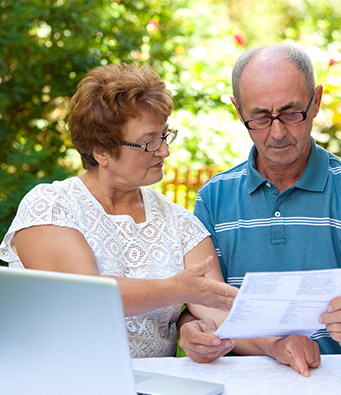The government's changes to the Age Pension could affect your ability to plan for a comfortable retirement....
Recent reports (1) suggest that more than 300,000 Age Pensioners will have at least part of their pension cut, with just under 100,000 of these people losing all Age Pension entitlements, taking effect from January 2017.
The Age Pension and assets test explained
The Age Pension provides income support and access to a range of concessions for eligible older Australians (2). Retirees who are currently aged 65 or over, and who satisfy income and assets tests and other requirements, can receive a full or part pension.
Recently, the government introduced changes to the Age Pension’s assets test thresholds which will take effect from 1 January 2017. The thresholds indicate the value of the assets you can own (excluding your home) before you lose your eligibility for the Age Pension.
What will change?
From 1 January 2017, some people will benefit and others will be worse off.
Around 50,000 Aussies are expected to be better off under the government’s changes and receive the full pension. Approximately 120,000 part-pensioners are likely to add around $30 per fortnight to their wallet.
- Full pension, home owners
If you own a home, the new assets thresholds will allow you to hold assessable assets up to $250,000 (singles) and $375,000 (couples) without impacting your full-pension entitlements. - Full pension, non-home owners
The new assets thresholds for those who don’t own a home will be $450,000 (singles) and $575,000 (couples).
The upside of losing
People who do lose their pensions in 2017 will automatically be entitled to receive a Commonwealth senior’s health card or a low income health card. These cards will provide access to Medicare bulk billing and less expensive pharmaceuticals.
If you’re on a part pension what will happen?
From 1 January 2017, around 91,000 part-pensioners will lose their Age Pension and about 235,000 part-pensioners’ payments will be reduced.
- Part pension, home owners
Couples who are homeowners will not receive the pension when their assets reach $823,000 in value. Single homeowners will stop receiving the pension when they have more than $547,000 in assets. - Part pension, non-home owners
Singles who don’t own a home won’t qualify for the pension if assets total $747,000. And couples will lose pension entitlements after they’ve accumulated more than $1 million in assets.
How you can prepare for the changes
Depending on how these changes will impact you, there could be a number of things for you to consider, including:
- If your entitlements are reduced, how will you replace lost income?
- Do your assets need trimming down? One of our financial advisors can help you with asset reducing strategies.
- Do you have any large planned expenses, such as a holiday or home repairs for example, that might reduce your assets before the changes come in.
Want to know more?
Stay tuned for further updates closer to when these changes are due to come in. If you would like more information now, Contact Us or Centrelink to find out how your Age Pension will be affected.
Assumptions as at 1 January 2017:
For single homeowner
- The existing lower asset test is projected to have risen from $202,000 to $210,500
- The full aged pension is projected to be $891 per fortnight
- Tapering rates are $1.50 per $1,000 for the current arrangements and $3.00 per $1,000 for the proposed arrangements
- The existing lower asset test is projected to have risen from $286,500 to $298,500
- The full aged pension is projected to be $1,343.20 per fortnight
- Tapering rates are $1.50 per $1,000 for the current arrangements and $3.00 per $1,000 for the proposed arrangements
(1) http://www.superguide.com.au/how-super-works/300000-retired-australians-to-lose-some-or-all-age-pension-entitlements
(2) http://www.humanservices.gov.au/customer/services/centrelink/age-pension
(3) https://www.superannuation.asn.au/resources/retirement-standard
Source AMP: www.amp.com.au



 RSS Feed
RSS Feed
